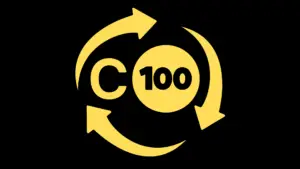Writing a position statement for family court can feel overwhelming – especially if you’re representing yourself.
But with the right structure and focus, it can become one of the most effective tools in your case.
In this guide, we’ll show you exactly what to include, what to avoid, and how to present your case in a way that keeps your child at the centre.
🔑 Key Takeaways
- A position statement is a short written summary the judge reads before your hearing.
- It should be child-focused – highlight what supports your child’s best interests.
- Keep it clear: what you’re asking for, why, and any urgent concerns.
- Don’t overload with evidence – that belongs in your witness statement.
- A well-structured statement helps you appear organised and credible.
Jump to:
What Is a Position Statement?
What Should It Include?
Common Mistakes Dads Make
Position Statement Template (Simple Structure)
Example Position Statements
Get Help Writing Yours
Family Court Position Statement FAQs
What Is a Position Statement?
If you’re going to a family court hearing, a position statement is your chance to explain your side clearly and calmly. It’s a short written summary the judge reads in advance to understand what you’re asking for and why.
It helps you stay focused and composed in court.
The court and CAFCASS (Children and Family Court Advisory and Support Service) use it to get a clear overview.
It doesn’t include evidence – save that for your witness statement.
“A good position statement tells the court what matters most – from a child’s perspective. It’s not about attacking the other parent. It’s about showing what your child needs.”
– Lach, founder of Dads’ Consultancy
What Should It Include?
When writing your statement, imagine you’re helping the judge understand your child’s needs in under 5 minutes.
- Start with the basics:
- Your name, child’s name, case number, and court name
- Hearing type (e.g. “Position Statement for First Hearing”)
- Summarise the situation:
- A brief history of what’s happened so far
- When you last saw your child and why that changed
- Set out your goals:
- What kind of contact you’re asking for (weekends, holidays, shared care)
- Any flexibility or proposals you’re willing to consider
- Show what you’ve already done:
- Attended a MIAM?
- Tried to resolve things amicably?
- Stay child-focused:
- Why your plan supports your child’s welfare and emotional wellbeing
- Keep your tone calm, practical and respectful
- End with clear requests:
- What you want the court to order
Formatting Tips:
- Number your paragraphs for easy reference
- Keep it to 1–2 sides of A4
- Use plain English
- Double-space your lines
Common Mistakes Dads Make
We’ve reviewed hundreds of statements. These are the pitfalls that harm your case:
- Making the statement about yourself, not your child
- Attacking the other parent or venting emotionally
- Including evidence or attachments (not needed here)
- Forgetting to say clearly what you’re asking for
👉 Learn more about our Child Arrangements Order process and how a McKenzie Friend can support you through court.
“If it wouldn’t help the judge make a decision – leave it out.”
– Lach
Position Statement Template (Simple Structure)
Want a starting point? Here’s a basic outline most dads can follow:
- Your details and the court’s info
- Full name
- Child’s name
- Case number
- Name of court
- Date of hearing
- Introduction
- “This is my position statement for the [First Hearing] regarding contact with my child…”
- Background
- A short, factual summary of what has happened so far
- Your current position
- What you’re asking the court to order, and why
- Child’s welfare focus
- Why this proposal is in your child’s best interests
- Closing
- Reaffirm what you’re asking the court to do, and your commitment to co-parenting positively
Real Position Statement Examples
Example 1: John Thompson
“I, John Thompson, am the father of Emily. Since our separation, contact has been sporadic due to last-minute cancellations. I request a structured contact order so that Emily and I can rebuild our routine and she can attend weekend horse riding events she enjoys with me.”
“I propose alternate weekend stays from Friday evening to Sunday evening, plus holiday contact. I am committed to co-parenting in a way that benefits Emily and ensures stability.”
👉 Why it works: John keeps it child-centred and avoids blaming language.
Example 2: John Smith
“I, John Smith, am the father of two children. The mother has a documented history of alcohol misuse and the children have been emotionally affected. I request full custody with supervised visitation for the mother.”
“This arrangement is in line with professional recommendations and prioritises the children’s wellbeing. I am open to reassessment based on future progress.”
👉 Why it works: John states concerns factually and offers a forward-looking solution.
Need Help Writing Yours?
We’ve supported dads through exactly this – and we’ll help you write the statement the court actually wants to read. Choose The Dad’s Consultancy.
Fixed-fee support. No jargon. No pressure. Just clear, strategic guidance from someone who’s worked inside CAFCASS.
Your advisor? Lach – a qualified social worker who’s worked inside CAFCASS and supported hundreds of fathers in family court.
📲 Message us on WhatsApp to get started – we’ll explain exactly how we can help and what to expect. No pressure, no jargon. Just clear, practical guidance from someone who’s been there.
If you’re ready for a call, we’ll book that in – but most dads prefer starting with a quick message.
Family Court Position Statement FAQs
Still got questions? You’re not the only one – here are the most common ones dads ask us…
What if I don’t know what to write?
That’s completely normal – most dads feel the same at first. Start by explaining your current situation, what outcome you want, and how that benefits your child. From there, we can help turn your rough notes into a clear, child-focused statement.
Do I need to include evidence in my position statement?
No. Evidence belongs in your witness statement, not here. Your position statement should explain what you want and why – in plain English, without supporting documents.
Can I get help without a solicitor?
Yes. You don’t need a solicitor to write your position statement. Our fixed-fee support gives you practical, court-savvy guidance from someone who’s worked inside the system.
What if I’m accused of something I didn’t do?
If you’re facing false allegations, your response belongs in a separate witness statement or dedicated reply to the court. Your position statement should stay calm and child-focused. We can help you plan the best way to respond.
How long should a family court position statement be?
Aim for 1-2 pages of A4. Keep it short, clear, and easy for the judge to read quickly. Number your paragraphs and avoid emotional or repetitive language.
When should I submit my position statement to the court?
Ideally, send your statement to the court and the other party 24 – 72 hours before the hearing. If not, bring printed copies on the day — but earlier is always better.
Does the other parent see my position statement?
Yes. The court expects both parties to share position statements with each other before the hearing. It helps clarify each side’s proposals and can sometimes lead to agreement without going before the judge.
Is a position statement the same as a witness statement?
No. A position statement outlines the issues, what you’re asking for and why. A witness statement is used to present evidence and respond to allegations. They serve different purposes.
Can a friend represent me in family court?
Not officially, but you can bring a McKenzie Friend. They can support you, take notes, and quietly advise – but they can’t speak on your behalf. We offer specialist McKenzie Friend support online (no court attendance).
What happens if I don’t submit a position statement?
You’re not legally required to, but you’ll miss the opportunity to frame your case clearly before the hearing. It’s one of the simplest ways to make a good impression.
How can I prove I’m a good parent in family court?
Through consistent, child-focused behaviour and evidence over time. A strong position statement isn’t about proving you’re better than the other parent – it’s about showing what’s best for your child.




